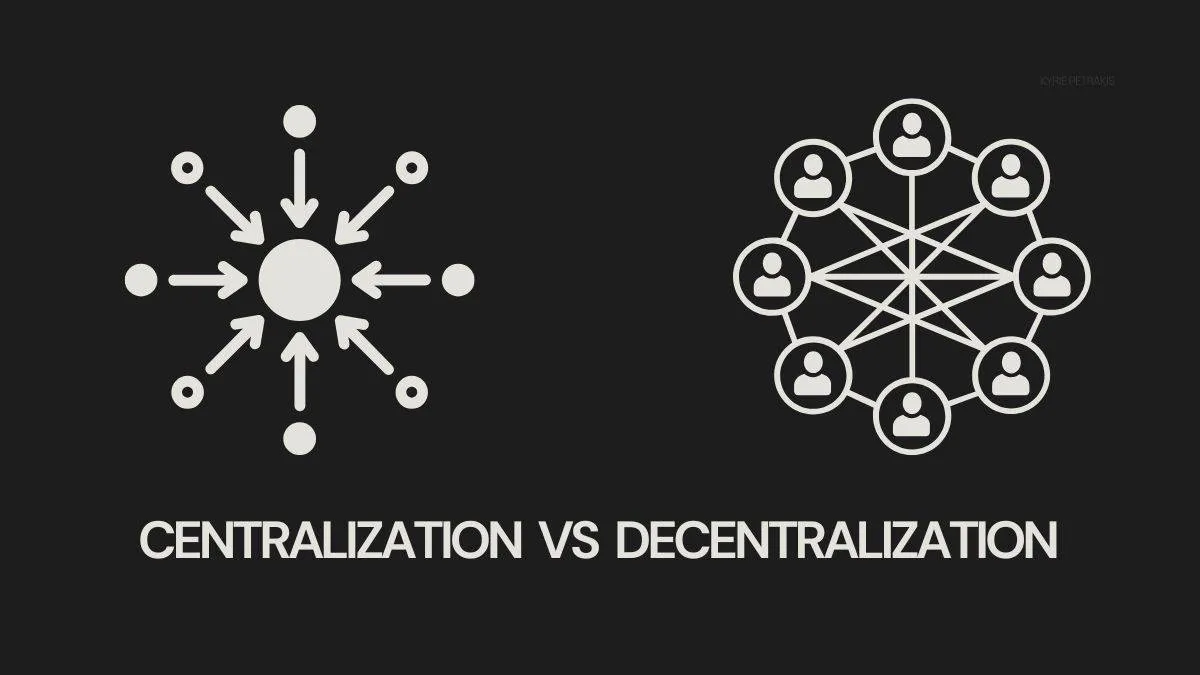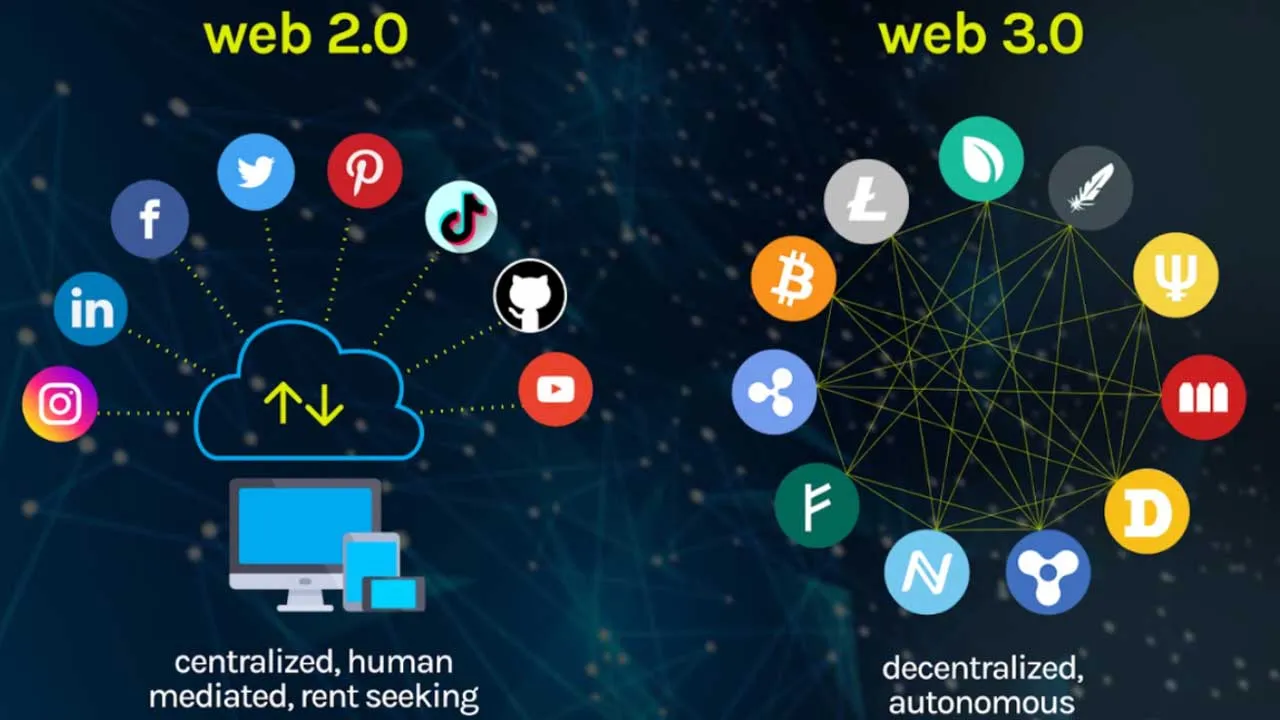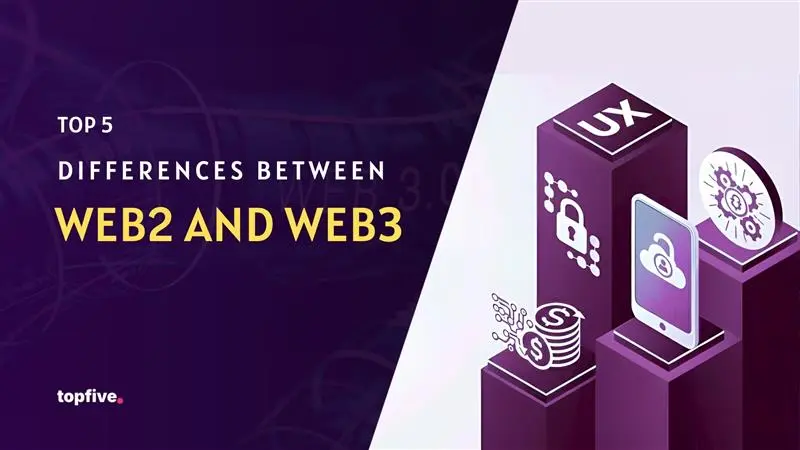Centralization vs. Decentralization
Web2: This is the current version of the World Wide Web, which focuses on static websites like social media platforms, e-commerce sites and search engines. Centralised server entities control and own user data and content.Web3 : Relies on decentralized technologies like blockchain technology and peer-to-peer networks to allow users to access and share resources directly without any central authority. Example: Your posts on platforms like Instagram, Facebook or money in a bank account are completely reliant on that company’s infrastructure.
Web2 (Centralization):On Web2, the platforms and data are controlled by centralized entities (e.g., Google, Facebook, Amazon). The user data is stored on company-owned servers, giving these corporations full authority to manage, restrict, monetize, or even remove access. The companies collect, analayze and monetize user data without explicit consent.
Example: Your posts on platforms like Instagram, Facebook or money in a bank account are completely reliant on that company’s infrastructure.
Web3 (Decentralization) : Web3 is primarily built on blockchain technology. This is where data is stored across a distributed network of nodes. Here, users have greater ownership and control over their digital identity, assets, and content.
Example: NFTs (Non-fungible Tokens), DeFi (Decentralized Finance)apps, or decentralized storage like IPFS, where no single entity can censor or control access. Simply Put: Web2 = Few corporations control the web. Web3 = Users collectively control the web through decentralized networks.
Data Ownership & Control
Web2 : Is controlled by large, centralized companies
Web3 : We’re giving users more control and ownership, as they are controlled and governed by communities.
Web2 (Limited User Control): All of the data consumers create is stored in one place on their server (posts, photos, searches, personal info banks), the company server (Google, Facebook, Twitter, etc.).
Those platforms not only own and monetize that data but hoard it, using it for advertising, algorithms and selling to third parties.
Web3 (User Ownership & Sovereignty) : Web3 enables self-sovereign digital identity solutions where users own and control their identity, assets and interactions.
Its contents are uncensorable — only the owner can change it or sell it.

Currency & Transactions
Web2 : Transactions on the web are mainly driven by fiat currencies and intermediated by financial institutions without any third-party, like banks.
Web3 : Includes digital currencies (such as Bitcoin and Ethereum) and smart contracts, which allow for transactions to be conducted without a middleman.
Web2 (Traditional Currency & Banking) : Transactions are based on fiat money (USD, INR, EUR, etc) and are routed through banks, gateway or intermediary gateways (PayPal, Visa, Stripe).
Web3 (Cryptocurrency & Smart Transactions): Transactions are processed via cryptocurrencies and tokens (BTC, ETH, stablecoins, etc.) and operated within blockchains. Here, transactions involve no intermediaries to take a cut, whether for processing or anything else.

Technologies
Web2 : This involves tools like HTML5, CSS3, JS, and AJAX.
Web3 : This involves blockchain, AI, ML, decentralized protocols and smart contracts to build smarter, connected applications.
Web2 (Centralized & Platform-Based) : It is developed primarily in HTML, CSS, JavaScript, and frameworks such as React, Angular, and Vue. This platform relies on centralized databases & servers (NoSQL databases, MySQL, AWS, Google Cloud).
Example : The Facebook or YouTube app is served from centralized servers with conventional web stacks.
Web3 (Decentralized & Blockchain-Based): It is created on blockchains (Ethereum, Solana, Polkadot, Polygon and others). Web3 uses smart contracts (Solidity, Rust, Vyper) for automated and trustless execution. It utiltizes crypto wallets (Metamask, Phantom) or dApps to connect.
Example : Uniswap or OpenSea operate through smart contracts and blockchain instead of a company’s private server.

Application & User Experience
Web2 : It has user friendly interfaces, social networking, blogs, and video-sharing websites.
Web3 : It provides products, e.g., dApps, virtual worlds, and AI-aided services. It also offers a growing space, and with some products that can be complicated, which validates the user complexity.
Web2 (Smooth &Centralisedd Apps): : Here, apps are very user-friendly, quick, and refined. This is offered via centralized servers and optimized platforms.
Examples : social media (Instagram, Twitter); streaming (Netflix, Spotify); e-commerce (Amazon, Flipkart).
Web3 (Decentralized dApps & Ownership-Centered UX): : Here, applications are decentralized applications (dApps) built on top of blockchains and smart contracts.
Examples : Uniswap (DeFi), OpenSea (NFTs), Decentraland (Metaverse).

Conclusion
Web2 is characterized by centralized platforms with user-generated content, while Web3 is an ideal of a decentralized, user-owned internet based on blockchain technology. These are the 5 differences on how they are constructed, owned, monetised, monetized and their economic model. These distinctions can help you make the right and informed decision for offering better digital experiences. For more informative blogs on technology, follow us.
